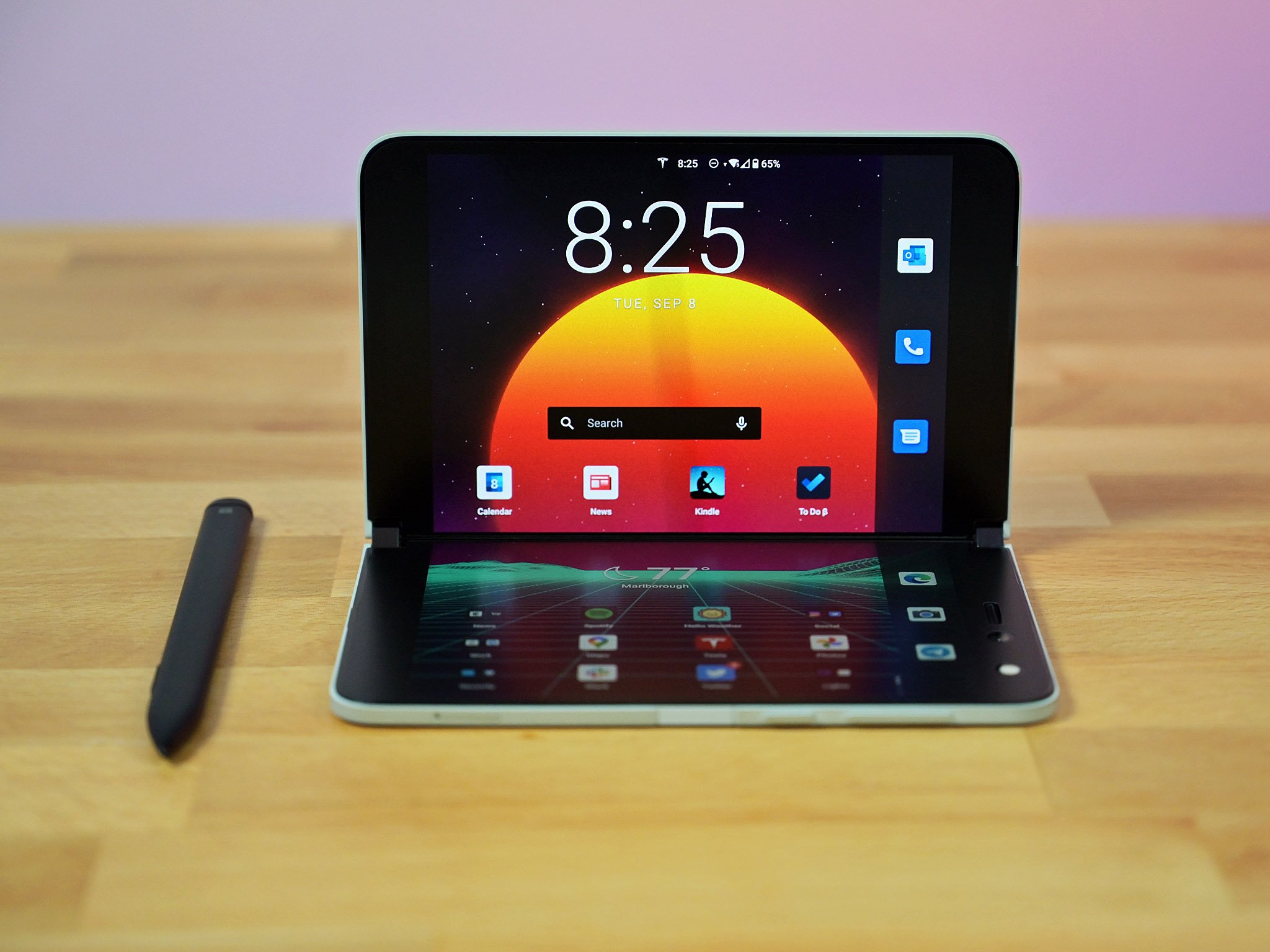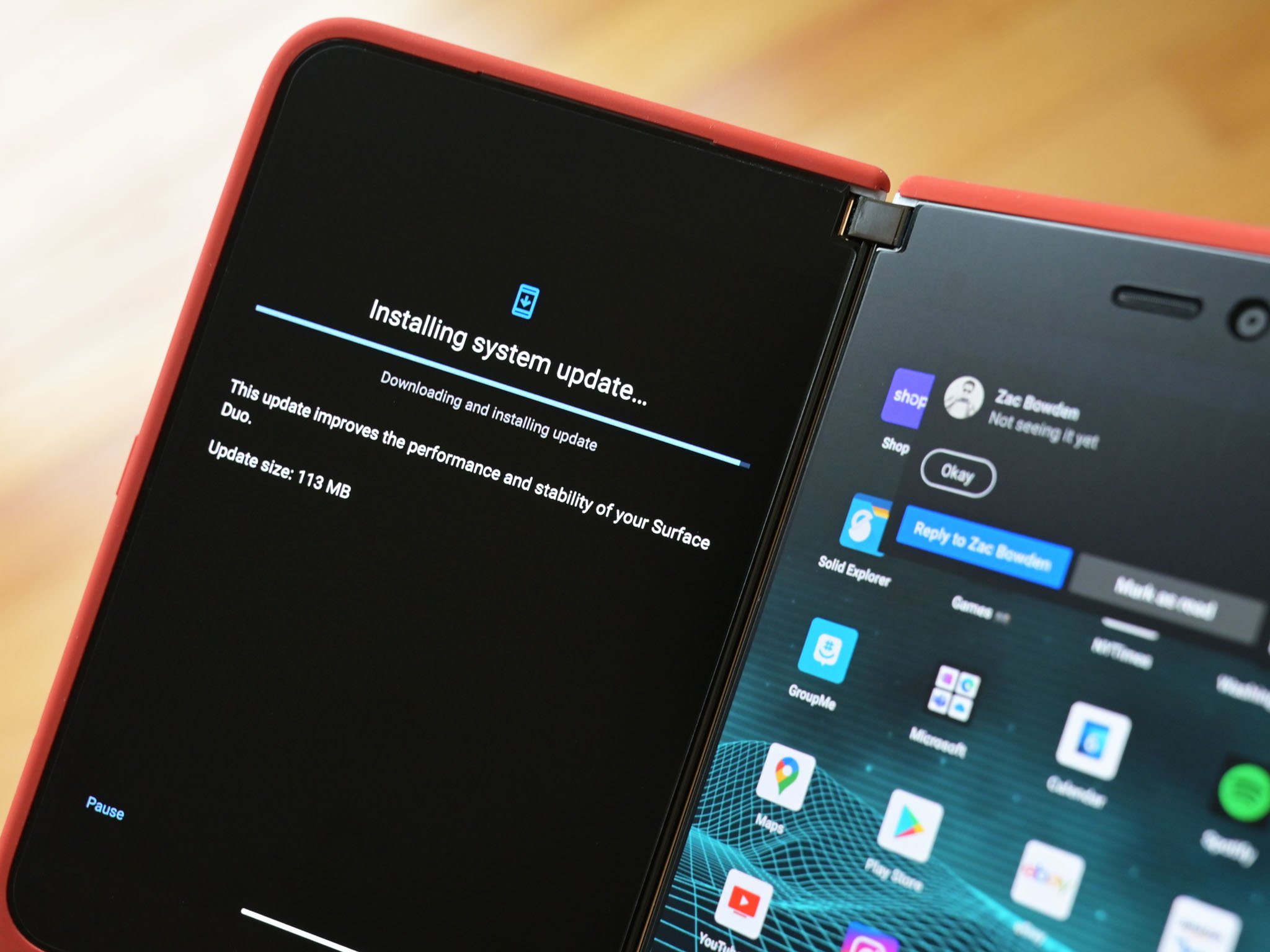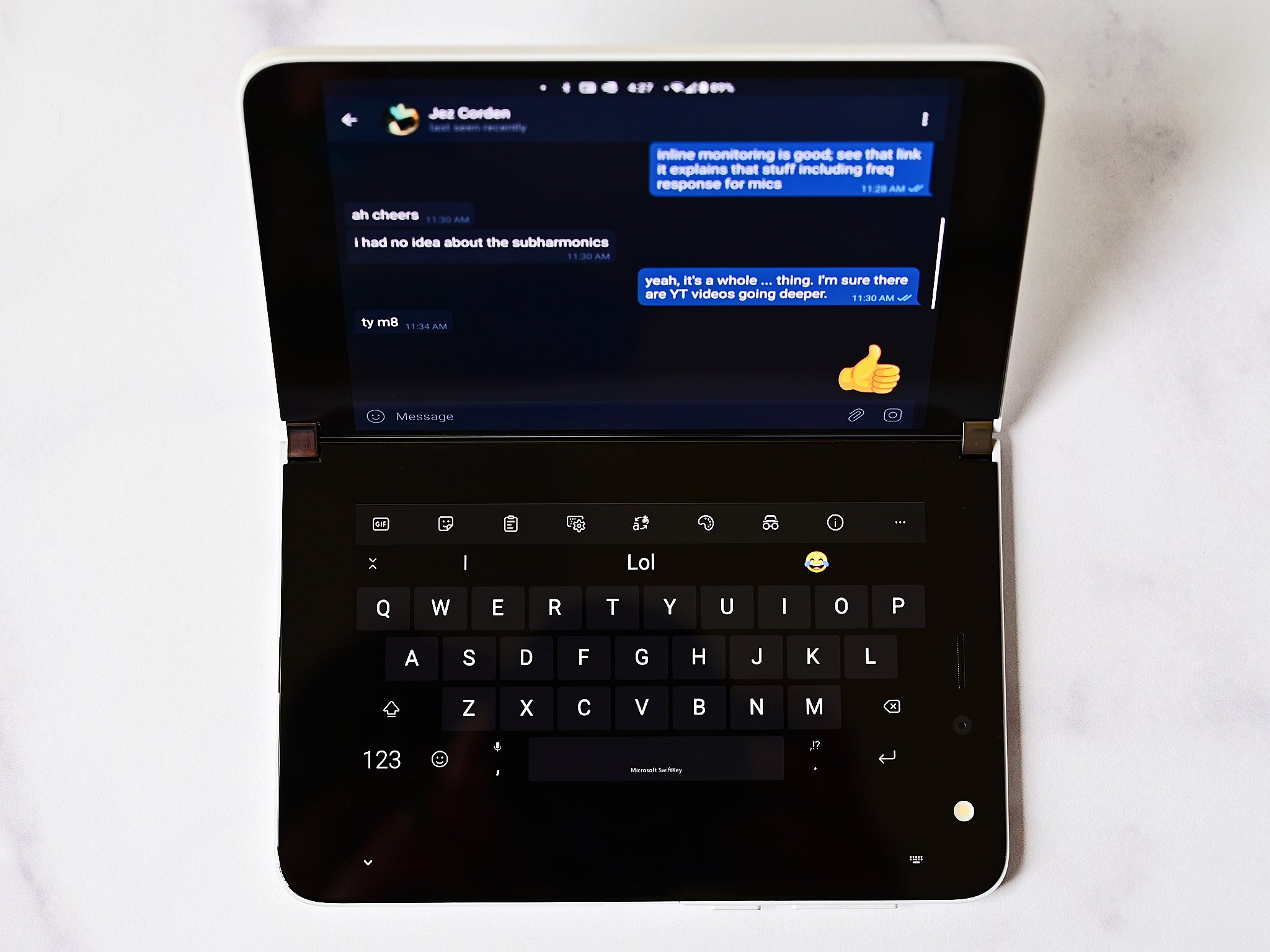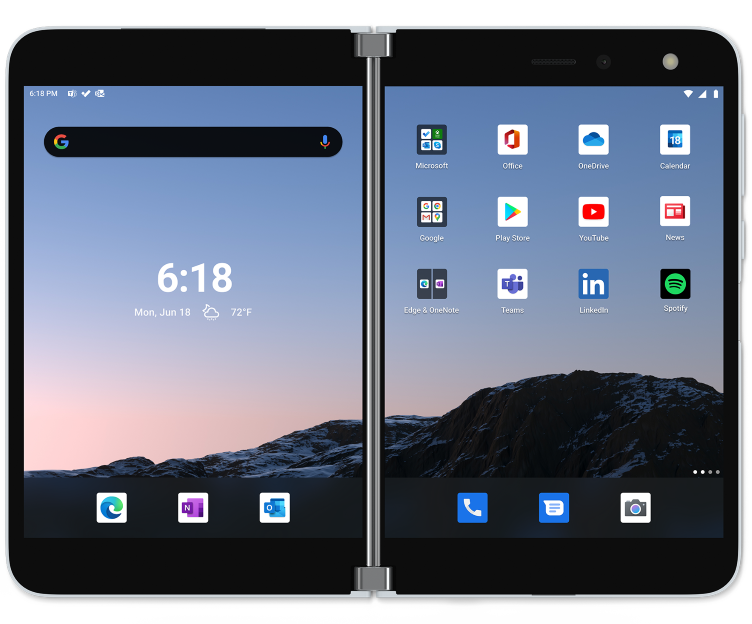Surface Duo's October update explained: What's fixed and improved
Windows Central goes deeper on Microsoft's first system update for Surface Duo.

Earlier this week, Microsoft pushed the first monthly update for its new Surface Duo dual-screen Android device. The software refresh delivers the latest Android security patch just one day after its release by Google, signaling a swift commitment to keeping Surface Duo protected. But besides the security patch, there are also numerous drivers, fixes, and patches delivered too. That's a good thing as many reviews have noted the Duo's software needs some work.
Microsoft recently took the time to explain to Windows Central what exactly it fixed with this October update and some other bits about what comes next.
Surface Duo October update

Surface Duo's hardware is widely praised as revolutionary or a feat of modern engineering. But the Android OS, which Microsoft is being very careful to not fork and customize too heavily, is a bit green. None of that is surprising, but as Microsoft says, they are learning a lot from users – what the company calls "the first contact" – now that the public is using it daily.
While Microsoft did post its official October changelog for Surface Duo, a practice that will continue going forward, that post did lack details on what was improved. In my conversation with those that worked on the update, more information came forward about what users can expect:
Improves Facebook Messenger single-screen experience / Facebook chat bubbles
One of the most specific bugs fixed in the update was an issue around what Microsoft calls "floaties" and it focuses on Facebook Messenger. The problem was these floating elements would span both displays regardless of the posture chose by the user. So, if Surface Duo was in phone mode (single display), a user could not interact with messages.
That is now fixed.
Improves call stability and experience
Before this update, some users complained that Surface Duo frequently dropped calls or accidentally hung up on people. Users tried to trace the issue to specific carriers or assumed Surface Duo was a lousy phone with poor reception. This problem was an issue that Microsoft did not see during its pre-release testing but became obvious once Surface Duo got into "large volumes of real-world customers."
All the latest news, reviews, and guides for Windows and Xbox diehards.
The glitch's cause arose when some "transient noise" hit the hall-effect sensor, which detects when Surface Duo is opened or closed, resulting in some calls being disconnected inadvertently.
Microsoft implemented some algorithms to solve this problem.
Improves touch stability
One of the most common complaints from reviewers and owners of Surface Duo was related to touch. Some issues were related to the device waking up (or being unlocked), the touch display not responding, users could not answer a phone call, interacting with the UI, etc.
Improvements in all these areas were implemented by updating the touch driver from 4.302.139.0 to 4.305.139.0.
Improves device stability
Like the previous touch example, this fix is more global and addresses the general usage of Surface Duo.
Reviewers and some users complained that the display wallpaper would randomly disappear or that general system responsiveness was sluggish with the device waking and unlocking. Another example would be one of the displays that would turn off (or not turn on) during use.
The October update is supposed to address all those bugs too.
"Fit and finish"
This final category is small, but it addresses the ongoing effort to update and refine the software experience on Surface Duo continuously. These particular examples include:
- 'Clear all' for the app notification drawer was in all caps for no reason
- SwiftKey gestures with swipe down to choose the suggested word was not working
November and beyond

Microsoft wouldn't provide any information about what comes next for Surface Duo, but there are a few things that we can share for users that are relevant about future updates, including:
- Monthly updates are planned to be released at the beginning of each month, timed with Android security updates. That cadence is going to continue, and Microsoft is confident they can hit a reliable update experience.
- Android 11 is being worked on for Surface Duo, but no ETA on when it ships.
- Besides bug fixes and improvements, new features will arrive through these monthly updates. One example we know is in the works is double-tap to wake, which is already in testing.
- Currently, Microsoft Launcher is updated through these monthly updates, but Microsoft will transition to Play Store updates.
- AT&T-branded Surface Duos should expect this update in the week ending October 16th, assuming it clears AT&T's more rigorous certification.
The good news is that many users on Reddit and other forums report that this update addresses many of the significant concerns and issues they were experiencing. It is also evident that Microsoft plans to stick to very regular updates for Surface Duo to continue to improve things, add new features, and fix issues reported by users as the device gets into more hands.
The more exciting topic is app updates that embrace dual screens and what new features Microsoft can bring to Surface Duo in the future. On the first point, there has not been any movement from first or even third-party apps adopting dual-screen spanning functionality as laid out in Microsoft's SDK. The other point regarding new features is trickier. Microsoft is careful not to fork its builds of Android, and instead, it works within the system so that any changes go upstream to the proper Android dev branch. That means a slower path to feature delivery but one that "breaks" fewer Android protocols resulting in these swifter monthly updates.
Microsoft has a clear roadmap, at least internally, for Surface Duo. How it evolves the product over the next year will be a story we continue to follow. This first update is at least a step in the right direction.

Two screens are better than one
Microsoft delves into the future of foldables with an ambitious dual-screen device, featuring two ultra-thin 5.6-inch AMOLED displays bound by a 360-degree hinge. This pocketable inking-enabled Android smartphone marks the latest in the Surface lineup, geared for mobile productivity.
Microsoft Surface Duo
Main

Daniel Rubino is the Editor-in-chief of Windows Central. He is also the head reviewer, podcast co-host, and analyst. He has been covering Microsoft since 2007 when this site was called WMExperts (and later Windows Phone Central). His interests include Windows, laptops, next-gen computing, and wearable tech. He has reviewed laptops for over 10 years and is particularly fond of 2-in-1 convertibles, Arm64 processors, new form factors, and thin-and-light PCs. Before all this tech stuff, he worked on a Ph.D. in linguistics, performed polysomnographs in NYC, and was a motion-picture operator for 17 years.

